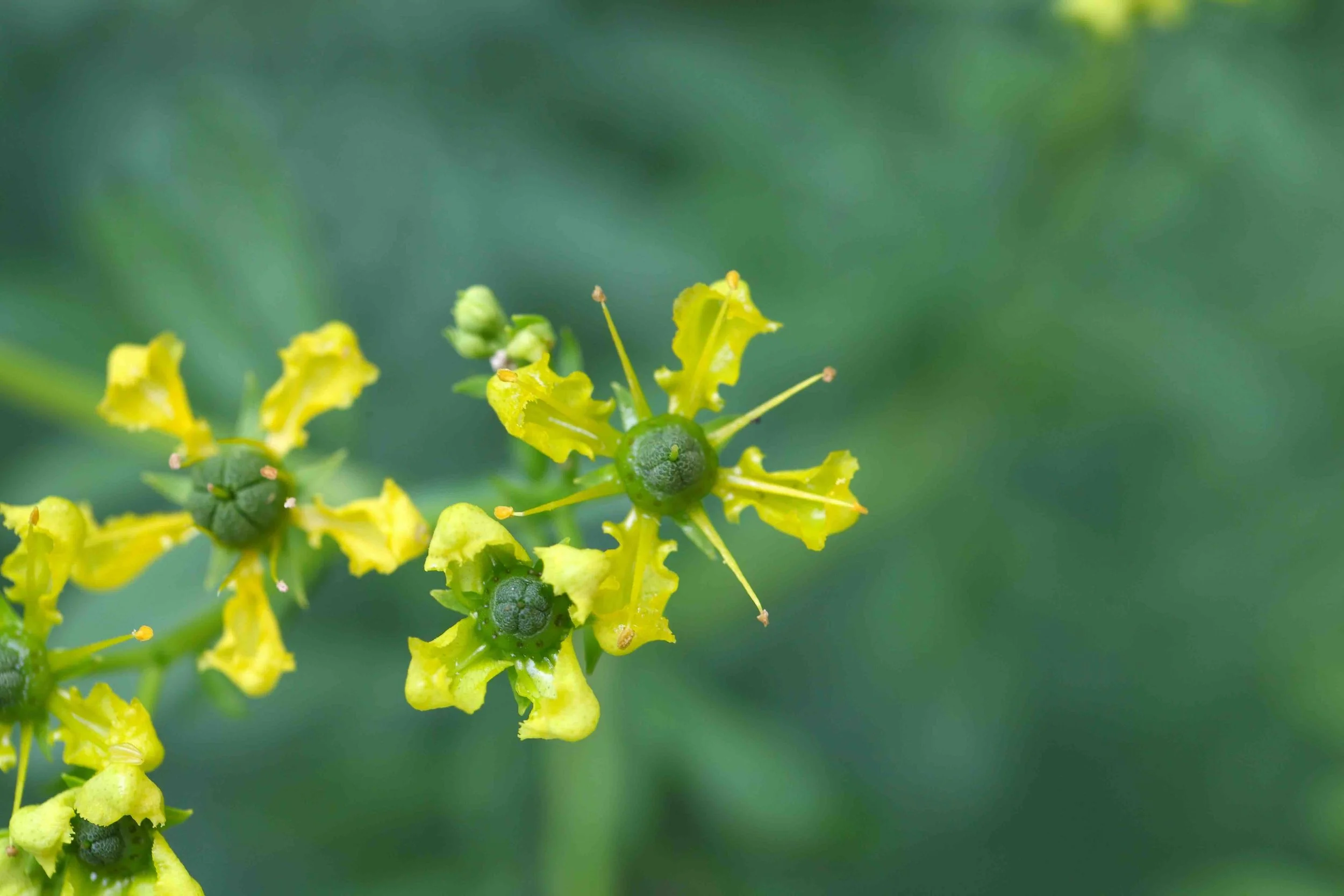
Rue at the Shakespeare Garden
Ruta Graveolens
Shakespeare includes many references to the herb rue, often with a mournful tone. To "rue the day" or regret an act draws its meaning from the early English form of the Greek "ruta." Rue has long been associated with regret, remorse, and the bitterness of repentance, likely due to its bitter taste and blistering leaves, which inspired one of its alternate names, the "herb of repentance," later known as the "herb of grace." As a result, rue was sprinkled into holy water and became a part of high mass ceremonies. In early times, it was believed to possess numerous medicinal and mythical qualities. Myths from ancient times held that rue could “quicken the sight, stir up the spirits, sharpen the wit, and cure madness,” and when mixed with figs and walnut kernels, even serve as an antidote for the plague.
Rue was highly valued in Shakespeare’s era, appearing in eight of his plays, each time linked to themes of repentance, remorse, grief, and sorrow. It is no surprise, then, that it features in Hamlet as one of Ophelia’s symbolic flowers.
Rue thrives in full sun and, true to its Mediterranean roots, can grow in a wide range of conditions, including dry and rocky soil. It is a perennial subshrub with fern-like, blue-green leaves and serves as a host plant for several swallowtail butterflies. It is also deer-resistant but has a short lifespan, often self-seeding to maintain its presence in a garden. Despite its delicate appearance, rue is moderately toxic to humans, so handle it with care.
Shakespeare references to rue:
-
Ophelia speaking:
There’s rue for you;
And here’s some for me: we may call it herb-grace o’ Sundays;
O, you must wear your rue with a difference.
-
Perdita speaking:
For you there’s rosemary and rue;
These keep
Seeming and savour all the winter long;
Grace and remembrance be to you both


